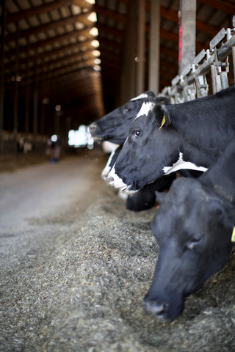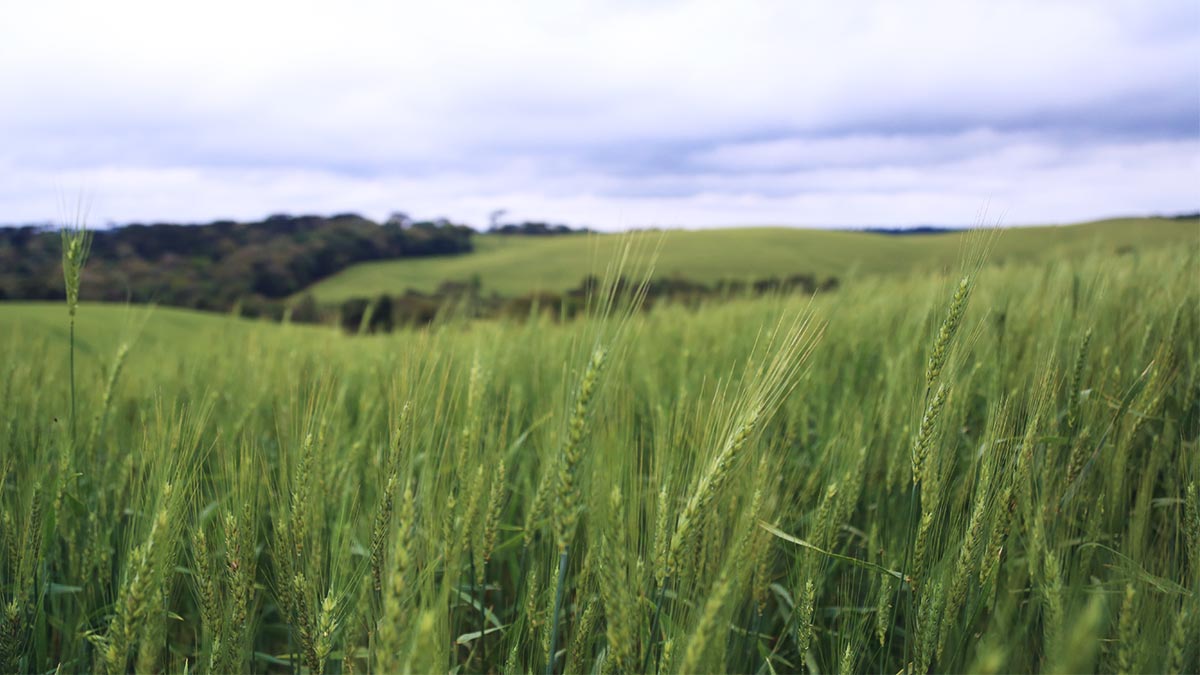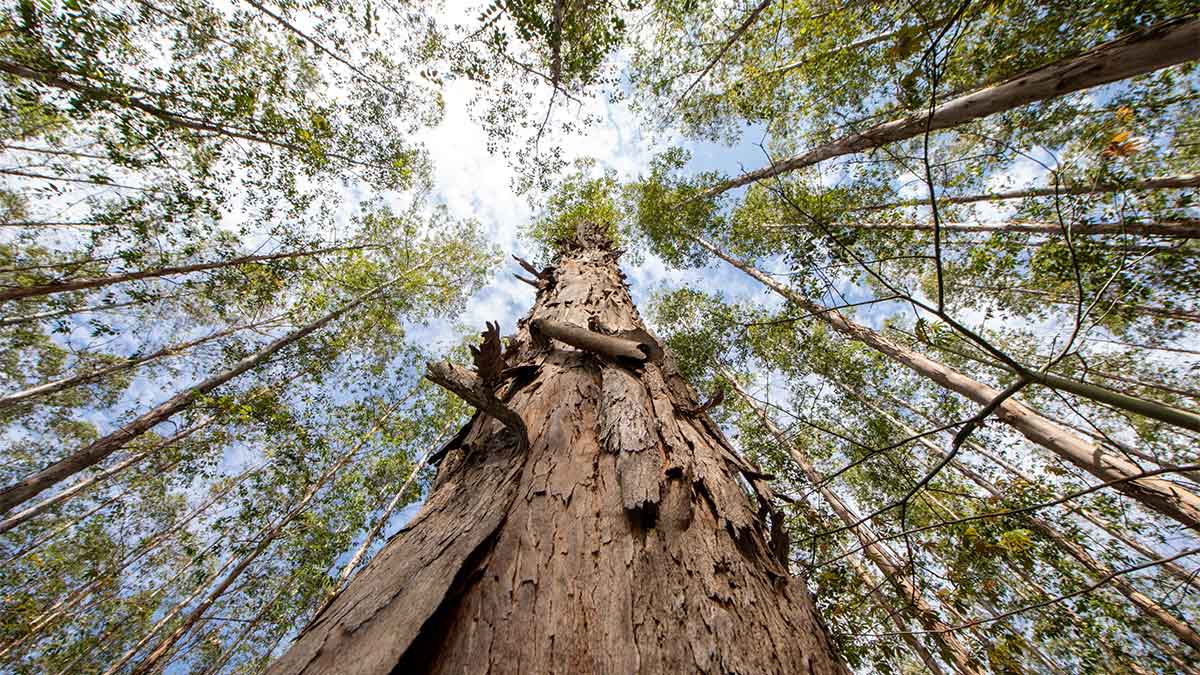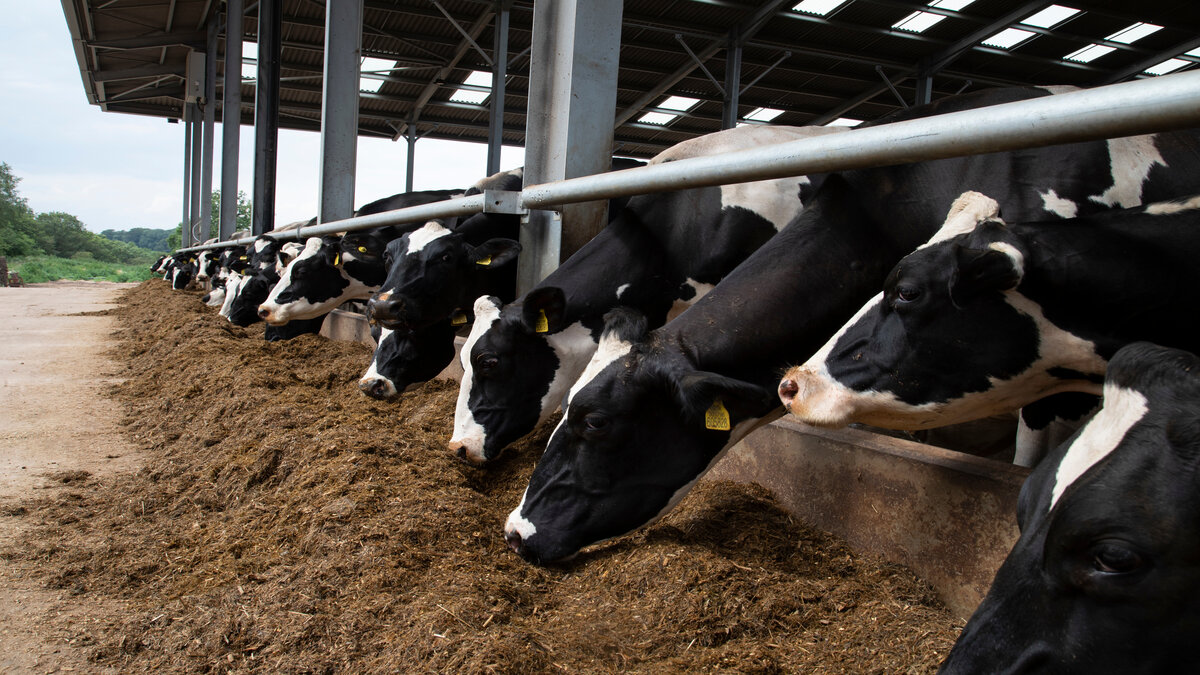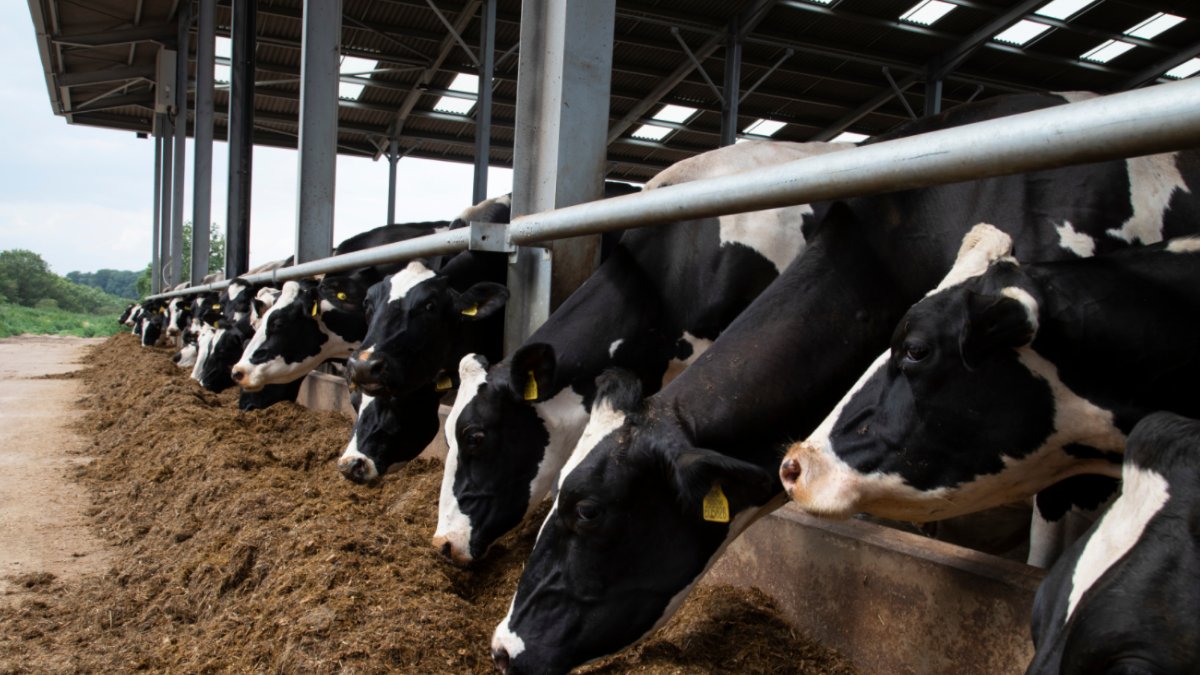Tarihe kısa bir bakış
Alltech’in başkanı ve CEO’su Dr. Mark Lyons, Haziran ayındaki ONE:Alltech Fikirler Konferansı’nda yaptığı konuşmada ilham veren fikirlere ve tarım endüstrisindeki en son yeniliklere değindi.
Bugün karşılaştığımız sayısız zorlukla yüzleşmek ve her zaman doğru olan şeyleri anlamak için belki de geçmişe tekrar bakmamız gerektiğini söyleyen Dr. Lyons, katılımcıları insanların ilk defa Kuzey Amerika'ya gelmeye başladığı, hayvanları getirip evcilleştirdiği, doğal kaynakları gıda üretimi için kullanmaya başladığı ve tarımsal üretim için daha fazla toprağa ihtiyaç duyduğu zamanlara götürdü.
Bu büyümenin devam ettiği tarih boyunca global ekonomiler ve kıtalar demiryolları ve karayolları ile birbirleriyle daha fazla bağlantılı hale geldi. Karbon, büyüyen ekonomiyi ve büyüyen gezegeni beslemenin ana yolu haline geldi. Sonuç olarak, karbon emisyonları arttı.
Tarım büyüyordu. Bilimsel atılımlar, daha verimli bir gıda sistemine giden yolu açıyor ve bugün gıda endüstrisindeki işletmelerin ve markaların yükselişine fırsat yaratıyordu.
Gıda üretimindeki verimlilikle birlikte tarımsal süreçlerde de üretkenliğe duyulan ihtiyaç, tarımın ürettiği karbon emisyonları ve tarımsal yenilikler üzerinde daha fazla durulmasına yol açtı. Çiftçiler bu konularda et, süt ve yumurta üretimi açısından, pazarın etki ve taleplerine cevap vererek iyileştirmeler yapmaya başladılar.
1800'lerin ortalarından bu yana, kullanılan fosil yakıt miktarı %20.000, insan nüfusu %1.329 ve artan bu nüfusu beslemek için kullanılan hayvan sayısı %524 gibi çok daha az oranda arttı. Aslında, bugüne kadar Amerika Birleşik Devletleri'nde 1960'ta üretilenden %50 daha fazla sığır eti üretiliyor. Bununla birlikte et üretimindeki bu artış, 60 yıl önce ihtiyaç duyulan hayvan sayısının sadece üçte biri ile sağlanıyor.
Bilimsel atılımlar çevremizin daha iyi anlaşılmasına yol açmış olsa da, iklim değişikliğinin suçluları hakkında henüz bir uzlaşma yok ve bu durum sadece Kuzey Amerika'ya özgü değil.
Başlayan ve devam eden bir değişim
Dr. Lyons konuşmasında, kristal kadar net olan bir gerçek varsa bunun değişim olduğunu ve bu değişimin devam edeceğini, pandeminin çevremizde meydana gelen bu değişimleri kabullenmeyi hızlandırdığını söyledi.
“Her zorluğun bir fırsat ve aslında bir hediye olabileceğine inanıyorum. İnandığımız her şey gerçeğe dönüşebilir, ancak farklı bakış açılarıyla bakmadıkça, farklı şeyler yapmak mümkün değildir.”
Dr. Lyons konuşmasında tarımdaki ilham verici bazı yenilikçi uygulamalardan bahsetti:
1. Dev hava temizleyiciler: Dünyadaki her 10 kişiden 9’u kirli hava soluyor ve bu kirlilik yılda yaklaşık 9 milyon ölüme neden oluyor. Belki de gerçek güzellik temiz hava ve temiz enerjidir. Bazı mühendisler, aynı zamanda sanat eseri olan dev dış mekan hava temizleyicilerini nasıl üretebileceğimiz konusunda çalışmalar yapıyor.
2. Havadaki fazla karbondioksiti endüstriyel ölçekte filtreleyerek gezegeni soğutmak: 2050'de yaygın olarak görülebilecek olan Teksas'taki dev hava yıkayıcılar, CO2'i yakalamak ve geçen yüzyılda açılan petrol kuyularına kuru formda pompalamak için basit bir kimya kullanıyor. Gezegenimizi ısıtan bazı sera gazları, bu tür yeniliklerle ortadan kaldırılabilir ve potansiyel olarak sera etkisinin azaltılmasına katkıda bulunabilir.
3. Yeryüzünün mantosundan gelen ısıyı kullanan elektrik jeneratörleri: Şu anda Kenya'da küçük bir ölçekte yapılan bu çalışmanın sera gazlarının havaya salınmaması için gelecekte büyük etkileri olabilir.
4. Yol yapımında bitüm yerine geri dönüştürülmüş plastiğin kullanılması: Halihazırda topraktan çıkarılmış olan fosil yakıtların birçoğu, biyolojik olarak çözünmesi 1000 yıldan fazla süren plastiğe dönüştürülüyor. Oysa bu plastiklerden bazıları geri dönüştürülerek yol yapımında kullanılabilir. Ve bu, daha yumuşak bir sürüş, daha az çukur ve daha uzun yol ömrü sağlayabilir.
5. Güneş yolları: Gorilla Glass gibi teknolojiler, yolları ve kaldırımları korunmuş güneş panelleri ile döşeyerek güneş enerjisi elde etmeye yardımcı olabilir. Bu paneller Amerika Birleşik Devletleri'ndeki tüm yolları kaplasaydı, bugün ihtiyaç duyulan elektriğin üç katını üretebilirlerdi.
6. Sonik yangın söndürücü: İklim değişikliğinin bir sonucu olarak, giderek daha fazla orman yangınıyla karşılaşıyoruz. Bilim adamları bu zorlukla mücadele etmek için, bir drone üzerine kurulabilen ve oksijeni yakıt kaynağından ayırmak için ses dalgalarını kullanan bir sonik yangın söndürücü üzerinde çalışıyor.
7. Havacılık yakıtı olarak hidrojen: 1990'dan bu yana, yolcu uçuşu başına karbondioksit emisyonları %50'den fazla düştü. Bununla birlikte, havacılık endüstrisi, hidrojenin potansiyel olarak yeni, temiz bir havacılık yakıtı olarak kullanılabileceği olasılıkları da değerlendiriyor. Örneğin; ticari ölçekli bir Airbus hidrojen uçağı İngiltere'de uçuşa geçti bile!
8. Uçaklar için hem yolcu kompartımanı hem de kanat görevi gören “karma kanat”: Uçak kanatlarının yolcular için kullanımıyla, şu anda gerekli olan yakıttan %20-30 oranında tasarruf sağlayabilir.
9. Çevreyi temizleyen ve seyahat kaynağı olarak yeşil algler: Yeşil alglerin bakteri yeme yeteneği, eski zamanlarda düşünülenden çok daha yaygındır. Bu bulgu, çevre ve iklim bilimi ile ilgili gerçek hayatta önemli kullanımlara sahip olabilir. Yeşil algler hem havada hem de yerde, birçok farklı seyahat türü için bir yakıt kaynağı olabilir.
10. Bağırsak mikrobiyom genleri: Mikrobiyomumuzda olup bitenlerin çoğu insan hastalıklarıyla bağlantılıdır. Bilimsel olarak daha fazla bilgiye sahip oldukça, insan sağlığına ilişkin sorunların üstesinden gelebilmek için birçok yeni yol keşfedilebilir.
11. Dirençli bakteriyel enfeksiyonları tedavi edebilen bir antibiyotik alternatifi: Durham Üniversitesi'ndeki bilim adamları, hücrelere iletimi ve bakteriyel enfeksiyonlara karşı etkinliği geliştirmek için kimyasal yapı değişiklikleriyle mevcut antibiyotiklere (peptoidler olarak adlandırılan) karşı standart bir alternatif geliştirdi. Bu alternatif, antibiyotik direnciyle mücadeleye yardımcı olabilir.
12. Hayvan atıklarından elde edilen metan, gıda üretiminde tek hücreli protein yetiştirmek için kullanılabilir: İnsanlar biyogaz çürütücülerle yalnızca metanı enerjiye dönüştürmekle kalmıyor, aynı zamanda bir dizi farklı besin maddesi kullanıyor. Ortaya çıkan bu tek hücreli proteinler, hayvanlar ve hatta insanlar için gıdaya geri dönebilir.
13. Gıda türlerini tanımlayan ve geri dönüşümü teşvik eden akıllı bir çöp kutusu: Gıda israfı, kullanılmayan büyük bir potansiyel alandır. Akıllı çöp kutusu, yiyecek atıklarımızın üçte birini daha evden çıkmadan azaltabilir.
14. Atıkları kompost haline getiren bir mutfak aleti: Gıda atıklarımızı doğrudan bahçelerimizde kullanılabilecek kompost haline getirmemizi sağlayacak sistemler geliştiriliyor. Bu sistemler tek bir düğmeyle, atıkları kokusuz bir şekilde parçalamak için öğütüyor, ısıtıyor ve besin açısından zengin kompost haline getirerek, aksi takdirde çöp sahasına gönderilecek olan atıkları %50'ye kadar azaltıyor.
15. Olumsuz çevresel etkiyi sınırlarken üretkenliği arttıran mikrobiyal araçlar: Emisyonların yoğunluğunu sınırlarken üretim verimliliğini artırmak için yeni beslenme ve yem katkısı stratejileri oluşturuluyor. Bu, gastrointestinal sistem yoluyla, toprak ve atık işleme süreçlerinde spesifik mikrobiyomların geliştirilmesine yardımcı olacak yeni araçlar kullanılması sağlanabiliyor.
16. Olumsuz çevresel etkiyi azaltma stratejilerini değerlendirmek için ölçüm araçları: E-CO2 çiftlik denetim sistemleri, laboratuvar testleri ve yem değerlendirmeleri gibi araçlar (Alltech IFM™ , Yea-Sacc®® VT Değer Testi, Alltech 37+ Mikotoksin Analiz Programı, Alltech Mineral Yönetimi) emisyonların azaltılmasında, üreticiler için verim ve sürdürülebilirliğe katkı sağlamada büyük faydalar yaratıyor.
17. Tarım emisyonlarını ve emisyon yoğunluğunu azaltmak için biyotik araçlar: Bazı yeni yönetim sistemleri, metanı kaynağında çıkarmak için filtrasyondan yararlanıyor ve bu potansiyel metan diğer tarımsal üretim sistemlerinde kullanılabiliyor. Gübre yönetimi, mera yönetimi ve mera beslenmesi, Alltech’in mikrobiyom anlayışının ve bu alanları birbiriyle bağlantılı olarak görmesinin önemini bir kez daha vurgulamaktadır.
18. Aktive edici enzimlerin biyolojik katalizör olarak kullanılması: Enzimler, sindirimi ve yem kullanımını iyileştirmek, hayvanlarda ve topraktaki mikrobiyomları faydalı bir şekilde değiştirmek, atıkları parçalamak için fermantasyon modellerini değiştirmek ve çevresel toksinleri azaltmak gibi birçok alanda tarımı destekleyebilir.
Hiçbir endüstri gezegenin geleceği üzerinde tarımdan daha olumlu bir etkiye sahip değildir. Tarım endüstrisi sıfır karbonla gıda üretimini gerçekleştirmede büyük bir potansiyele sahiptir ve iklim değişikliğine olumlu yanıt verebilenlerin en büyük parçasıdır.
Konuşmasında tarım endüstrisinde çalışmaktan duyduğu onur ve heyecanı dile getiren Dr. Lyons, hep birlikte çalıştığımız takdirde iklimi soğuturken dünyayı besleyebileceğimizi, ayak izi değil, anlamlı bir miras bırakabileceğimizi ve gezegenimizin geleceği için olağanüstü fırsatlar yakalayabileceğimizi söyledi.
Konuşmanın tamamını izlemek ve daha fazla edinmek için one.alltech.com ziyaret edebilirsiniz.













